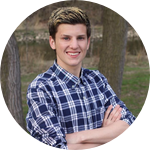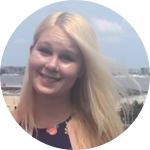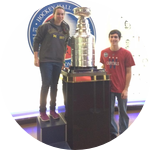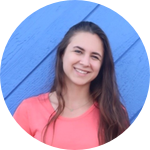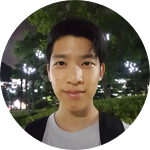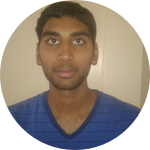About This Project
The Cas9 enzyme has seen a rapid expansion of applications in the field of gene therapy and for this reason it is imperative that this tool is accurate and efficient in order to be successful. Our team is developing a testing platform for comparing engineered Cas9 variants to the natural form through direct competition. This system will be used to expedite the design process of Cas9 systems and expand the Cas9 toolbox by allowing faster identification of efficiency.
Ask the Scientists
Join The DiscussionWhat is the context of this research?
CRISPR/Cas9 systems have proven to be powerful tools for synthetic biology, providing greater control over DNA editing while reducing price and effort. However, CRISPR/Cas9 systems can be improved and tailored to specific uses by applying an engineering mindset. Current efforts focus on improving Cas9’s functionality and specificity. We intend on developing a testing platform for Cas9 binding to DNA that will allow others to test protein variants in a competitive assay. This will standardize experiments and eliminate aspects that make it difficult to compare binding affinities of engineered Cas9s.
What is the significance of this project?
Essentially, the CRISPR/Cas9 system is used to directly edit the DNA of an organism. It is bacteria’s immune system against bacteriophages. Bacteria incorporate fragments of the virus genome and use them as a defense mechanism. Once the bacteria encounter the same virus, a guide RNA locates a specific section of the DNA and signals for the Cas9 protein to lock onto the DNA. The Cas9 then breaks both strands of DNA and can then be used to disable a gene or insert a new gene. This system allows for easier and faster modification of the genome than current methods; this technology can help scientists and the public in many ways, such as finding cures for genetic therapy, understanding the role of proteins within cell, cell function, and genetic diseases.
What are the goals of the project?
Our goal is to design and characterize an assay that allows scientists to measure the binding efficiencies of separate CRISPR Cas9 systems. Our model relies on competition between two Cas9s from two separate bacterial species. In each experiment, one Cas9 will be active, while the other will deactivated. Binding of the active Cas9 will cleave the testing plasmid, which instructs the cell to make Green Fluorescent Protein. Better binding of the active Cas9 will thus lead to degradation of the plasmid, making cells less green. Better binding by the deactivated Cas9 won’t affect the plasmid, but it will prevent the active Cas9 from binding and causing the plasmid to degrade, so the cells will stay green.
Budget
Our budget is best divided into three categories: project specific, lab operations, and iGEM.
Our project this year is primarily cloning based, with the majority of our budget going towards supplies critical to the assembly of our construct. This includes enzymes, PCR reagents, Gibson Assembly kits, and high efficiency cloning cells. Another segment of our budget will go to sequence confirmation of our construct during assembly and of the final project.
Another chunk of our budget goes toward operating our lab, paying for things like glass and plasticware, micro pipets, etc.
Lastly, some of our budget goes to funding our entry into the iGEM competition itself, the main purpose of MSBT.
The cost of going from an idea to its implementation as a project worthy of presentation at the iGEM conference is high, and we are a self-funded team of undergraduate researchers. Without your support, our goal would be impossible.
Endorsed by
 Project Timeline
Project Timeline
The cloning process started in the middle of August and will continue through the summer until we isolated our construct. We anticipate that this will be complete in mid to late September.
Following isolation and verification of the construct, we will then characterize the functionality of our plasmid and explore methods to incorporate the plasmid in a stable cell line.
We will then begin experimentation with our CRISPR systems, with results by the end of October.
Aug 15, 2018
Started cloning construct/Project launched
Sep 15, 2018
Finish cloning construct
Sep 17, 2018
Project Launched
Sep 20, 2018
Conduct experiments to measure fluorscence
Oct 20, 2018
Put the finishing touches on our project
Meet the Team
Matthew Fischer
Matthew Fischer is a senior majoring in Cellular and Molecular Biology. He is currently researching epigenetics in the Pathology Department of the Medical Campus under Dr. Dou. He hopes to pursue an MD. In his free time he enjoys runs in the park and reading about science.
Sam Bower
I am an Ecology, Evolution, and Biodiversity major at the University of Michigan. I value the diversity of ideas that stem from this team and the ways it challenges me to think on a different scale then I do in my usual studies. I am passionate about the environment and the conservation of biological diversity. For these reasons I have goals of attending law school in the future with a focus on environmental law.
Angela Hsu
I am a rising junior studying Cellular and Molecular Biology & Biophysics. I am also working towards my honors thesis in the Kumar Lab. I am interested in knowing how Ksp1 affects translation and cell survival in response to stress. Currently, I am studying the relationships between Ksp1 and initiation factors in Baker’s yeast. After college, I hope to enter graduate school to pursue a PhD in the biological field.
Anna Mychalowych
Hello! Anna is a rising senior majoring in Cellular & Molecular Biology and minoring in Creative Writing. She works under Dr. Catherine Keegan in the Keegan Lab, which studies developmental birth defects in mouse models. Her current focus investigates apoptosis in the Danforth’s Short Tail (Sd) mouse. In the future, Anna will pursue a PhD and work in the biotech industry. She enjoys learning about genetics, making food with friends, and making too many Spotify playlists.
Thomas Stewart
I am a biomedical engineering student with an interest in protein engineering and the use of proteins as theapuetics to help treat diseases. Currently, my research is focused on computational protein design and validation for the Zhang Lab within the department of Computational Medicine and Bioinformatics. I hope to pursue a PhD in biochemistry and one day make drugs that improve the lives of others.
Aaron Renberg
Aaron Renberg is an enthusiastic masters student. He has previous research experience interning at the National Institutes of Health in Bethesda, MD and at Children’s National Medical Center’s genetic medicine department in Washington, D.C. He published an Honors Thesis based on his work in the Soleimanpour lab at the Brehm Center for Diabetes Research at U of M. When a micropipet isn’t in his hand, it's usually replaced by a hockey stick.
Annabelle St. Pierre
As a junior at the University of Michigan, I am studying Biomedical Engineering with a concentration in biochemistry. I plan to obtain a master's degree in Biomedical Engineering and use my knowledge to advance medical devices and/or pharmaceutical drugs.
Jaewon Heo
I am a rising senior studying Biochemistry at U of M. My current research involves the design and testing of Cas9 protein inhibitors, as well as the characterization and functional studies of PAM sequence mutants. I believe that student-led research such as ours is an effective way to become involved in the scientific community and explore the value of collaborative science. After graduation, I plan to pursue further study in biochemistry and molecular biology at graduate school.
Naveen Jasti
Naveen Jasti is a senior majoring in Cellular and Molecular Biology. He enjoys volunteering and conducting research on mobile elements in the human genome, and hopes to pursue an MD-PhD. On weekends and during evenings, he often gets lost in a book or plays pick up soccer.
Lab Notes
Nothing posted yet.
Project Backers
- 39Backers
- 101%Funded
- $3,557Total Donations
- $91.21Average Donation

